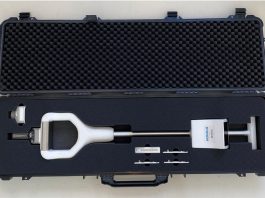Researchers affiliated with the University of São Paulo (USP) have discovered that deforestation in the Amazon causes an increase in the diversity of antibiotic-resistant bacteria.
An article on the study, published in Soil Biology and Biochemistry, compares the microorganisms that live in the soil of native forest with those found in pasture and croplands. The researchers found the diversity of antibiotic-resistant bacteria is higher in deforested than forested areas.
Lucas William Mendes, a researcher supported by FAPESP at USP’s Center for Nuclear Energy in Agriculture (CENA), said: “Bacteria produce substances with which to attack each other in a competition for resources that’s usual in any environment. When an area is deforested, however, several factors intensify this competition, favouring the bacteria that can resist these substances. If they reach humans, these microorganisms can become a major problem.”
In the study, the researchers at CENA-USP, collaborating with colleagues at the Luiz de Queiroz College of Agriculture (ESALQ-USP) and scientists at the National Laboratory for Scientific Computing in Petrópolis, Rio de Janeiro State, analysed some 800 million DNA sequences extracted from 48 soil samples collected in Pará State and northern Mato Grosso State, both of which are part of the Amazon biome.
Using bioinformatics tools, the researchers ran the DNA sequences from the samples against a genetic database and found 145 antibiotic-resistant genes that trigger 21 different molecular mechanisms. Although antibiotic-resistant bacteria are present in forest soil, these microorganisms and their resistance mechanisms are much more abundant in the soil of pasture, deforested areas, and croplands.
Mendes said: “The process of occupation in the Amazon consists of first logging the most valuable trees and then clearing and burning all the rest to make way for crops or forage grass for cattle. Besides ash from the burned vegetation, the soil is limed to reduce the acidity and other agrochemicals are applied. The abundance of nutrients fuels bacterial proliferation and fierce competition for resources.”
According to the researchers, we cannot be sure that microorganisms immune to antibiotics can migrate from the soil of the Amazon to food produced there, such as grain, sugarcane, and beef. Mendes explains: “Some research assumes the transfer can occur, but to date, no studies have demonstrated it. It needs to be watched carefully because if these drug-resistant bacteria reach humans, they’ll cause a serious public health problem.”









